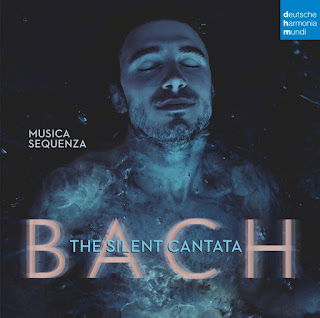Johann Sebastian Bach has long been a guiding star for the bassoonist
Burak Ozdemir. In his native Istanbul he regularly sang as a boy
chorister in Bach’s choral works, and as a member of Early Music
ensembles he later played the bassoon in all the composer’s great sacred
vocal works, from the Passions to the Christmas oratorio.
With his album “The Silent Cantata”, Ozdemir pays his own very
personal tribute to Bach. He has selected arias and chorales from 12
sacred cantatas that Bach wrote during his incredibly productive Leipzig
years starting in 1723, and has rearranged them for bassoon and for the
musicians of his Baroque ensemble Musica Sequenza.
In his programme of Bach cantatas, Burak Ozdemir plays all the vocal
parts himself on the bassoon, from soprano through alto and tenor to the
bass. He does not only adopt the role of soloist, but sometimes also
performs a cantus firmus part such as is sung by the soprano, for
instance, in the Bach original. Sensitive and with dignity, graceful and
delicate, but also exuberantly happy – thus the bassoon moves without
words through the sacred universe that Bach composed solely in the
honour of the Lord. In the aria “Meine Seele wartet auf den Herrn”,
taken from the cantata Aus der Tiefe rufe ich, Herr, zu dir BWV 131, the
bassoon exudes lyrical inspiration to the swaying rhythms of the
strings. Solemn and virtuoso at the same time, the bassoon warbles
joyfully in the chorale “Allein zu Dir, Herr Jesu Christ” from the
cantata of the same name, BWV 33. And in “Die Seele ruht in Jesu Händen”
from Herr Jesu Christ, wahr’ Mensch und Gott, BWV 127, Ozdemir does
more than evolve a positive sensuality in his arioso playing: the
pizzicati and dabs of a portative organ even contribute a slight jazz
groove. “This arrangement is the only one”, says Ozdemir, “where I give
the bassoon more space to improvise. That’s why it seems very
up-to-date.”
With “The Silent Cantata”, Ozdemir also creates a very special and
entirely new spiritual listening experience; hence his choice of the
somewhat paradoxical title for the album. “It’s this contradiction that
appealed to me. The term ‘cantata’ immediately makes people think of
singing, and there is really no such thing as a ‘silent cantata’.” None
of the cantata texts appear on the pages of Ozdemir’s score, but their
place is taken by the emotional power of music that conveys its message
entirely without words. “I have a strong belief that Bach’s music can
transport feelings and religious faith without any text, too.”
Burak Ozdemir has assembled the individual cantata movements to
create a two-part narrative that comes close to a story of the Passion.
To prepare for this, Ozdemir spend a long period of time making an
intensive study of some 200 Bach arias. During this lengthy preparation
phase, he focussed not so much on the music as on the texts, which he
read care fully and finally chose for his “The Silent Cantata” project
with the aim of giving shape to his ideal of a universal divine love. (musicasequenza.com)





gracias !
ResponderEliminarasi da gusto escuchar esta musica religiosa, sin propaganda, solo el genio de bach, sin intromision ideologica del patron que le pagaba
Both discs of Ozdemir are amazing.
ResponderEliminarThank you very much
Can you reupload please?
ResponderEliminar